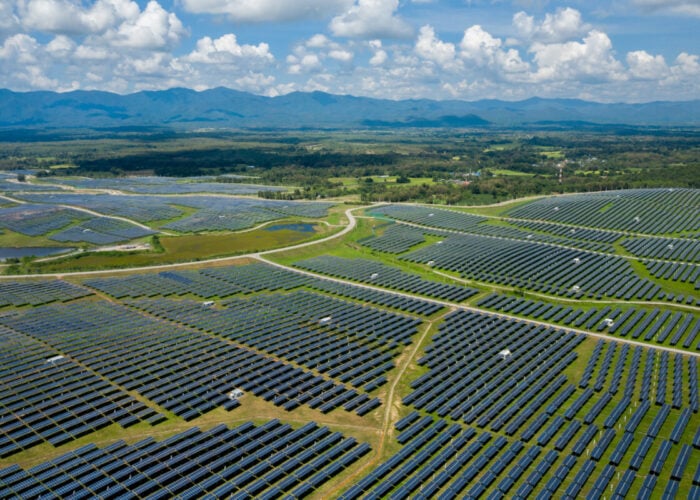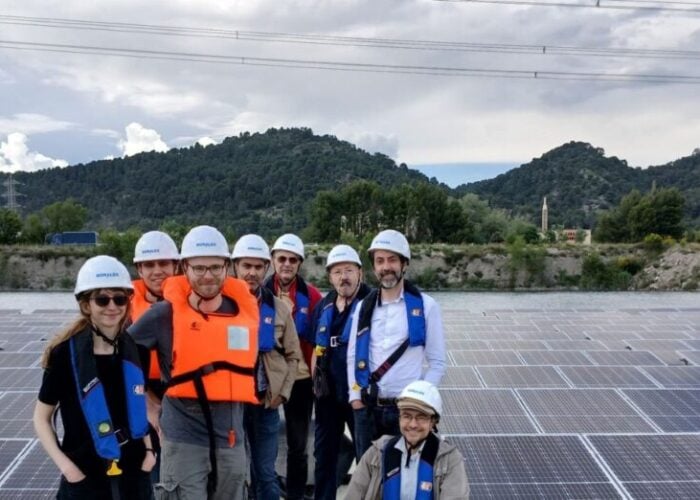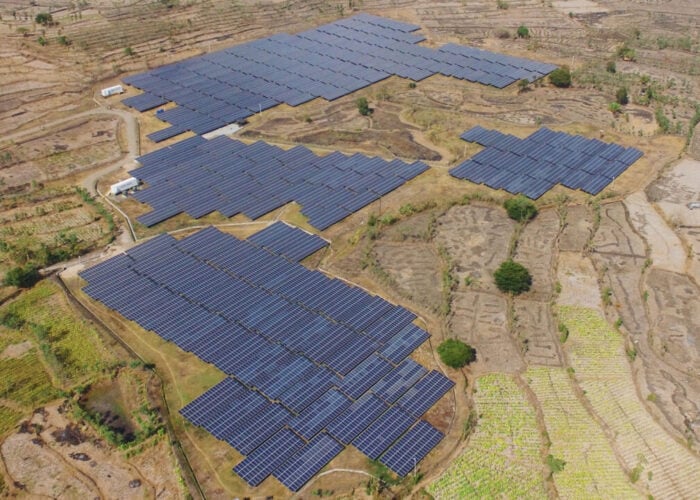
There is likely to be demand across Europe for producing hydrogen from renewable energy, but the right regulatory frameworks and legislation need to be in place for the green hydrogen industry to find success.
A panel of industry stakeholders and experts taking part in a session on green hydrogen at the Large-Scale Solar Europe event today appeared to be broadly in agreement that a lot can be done to bring down the barriers to green hydrogen’s commercialisation, including the complexity of structuring multiple off-taker agreements and the still-high cost of electrolysers.
Unlock unlimited access for 12 whole months of distinctive global analysis
Photovoltaics International is now included.
- Regular insight and analysis of the industry’s biggest developments
- In-depth interviews with the industry’s leading figures
- Unlimited digital access to the PV Tech Power journal catalogue
- Unlimited digital access to the Photovoltaics International journal catalogue
- Access to more than 1,000 technical papers
- Discounts on Solar Media’s portfolio of events, in-person and virtual
Cristian Carraretto, associate director for energy efficiency and climate change at the European Bank for Reconstruction and Development (EBRD), said that lenders need to be confident from the very beginning that projects they are investing in “begin with a well-structured concept”.
“The project needs to make a lot of sense, from many perspectives, including regulatory and the legal side. In a situation where a market is opening up, and the regulatory framework is not there yet, obviously things are more complicated, and lenders might have a higher level of scrutiny for projects because they need to be bankable,” Carraretto said.
Policymakers and multilateral institutions like the EBRD have an opportunity to help shape the market, helping projects to move through the financial process as smoothly as possible. Both Carraretto and fellow participant Bernardo Cunha Ferreira, a specialist lawyer at law firm CMS Rui Pena & Arnaut said that there is an opportunity to learn from how solar financing was made effective in the past.
Through engagement with policymakers, regulatory frameworks were created and although in the early days some of those frameworks were “too rigid,” and mistakes were made that had to be later corrected, in the end solar financing became “one of the major successes that we can talk about,” Carraretto said. Cunha Ferreira meanwhile said that while some solar feed-in tariffs had been set at higher levels and for longer terms than they perhaps needed to be, ultimately, they set up an industry that now thrives in several European countries.
The session’s moderator, Carlos Albero, a finance expert at accreditation and classification group DNV, took up this theme later on and said that while the original feed-in tariffs had largely achieved their aim of kick-starting the European solar market, the move to market-led mechanisms such as corporate power purchase agreements (PPAs) and government auctions is now widely accepted to be working.
Blending hydrogen into the gas grid: Greenwash or bridging solution?
The panel’s participants also seemed to be in broad agreement that while green hydrogen is a mature technology, it remains unlikely to be competitive with other forms of generation without strong policy signals like high carbon pricing for at least the next decade.
In the meantime, moderator Carlos Albero asked if blending — putting hydrogen as a percentage of what’s carried in existing natural gas pipelines — can help lower the cost of green hydrogen by utilising that same infrastructure and some of the same companies.
Panellist Luis Ignacio Parada, head of global regulatory services at gas infrastructure group Enagas, which among other things operates the Spanish gas grid, said that blending can result in “quite cheap” investments in hydrogen, but argued that the European Commission does not have a clear view on this, which he said is needed.
While some stakeholders view blending as a form of “greenwashing” to keep fossil fuel companies in the game while they lock in their existing asset base for years to come, he argued that in an energy transition towards decarbonisation, it can be a temporary, “bridging” answer for a decade or two before we achieve “pure” hydrogen on those networks.
A group of gas grid operators from 21 European countries published the European Hydrogen Backbone this week, a document which lays out a “vision” of creating a 40,000km network taking hydrogen around the continent. Basing it largely on existing infrastructures — around 69% natural gas pipelines repurposed versus 31% new hydrogen pipelines — would be a feasible option for for creating a green hydrogen grid over the next 15 to 20 years, Parada said.
While Parada and others said that it also needs to be made clear by the EC what the terminology should be on what constitutes green hydrogen and what is acceptable, EBRD’s Cristian Carraretto made the point that it won’t be the suppliers of hydrogen that dictate how the market ramps up, but instead the end-users that demand it.
Putting demand before supply
“We need to think in perspective on why we are talking about decarbonised fuels like hydrogen. It is because there are some economic sectors that cannot decarbonise by simple electrification.
“And they need a fuel equivalent in the process. So that’s why we’re talking about low carbon hydrogen and possibly green hydrogen. To supply these sectors, like long distance transport and steel making, [the] fertiliser industry, cement, with an energy carrier that can enable reaching net zero, that’s where we are going. And that’s how we need to see hydrogen in perspective.”
It would be a mistake to only think about the cost comparison of hydrogen per kilogram per unit of energy against the alternative fuels available in the market, because not only is hydrogen “in the infancy of its learning curve,” and the gap to fossil fuels will take a few years to close, but the key opportunity is decarbonisation.
“I think in the context of stricter climate policies, we see a change in markets and there is a growing demand for green products. So that’s where you need to look at the prospective opportunity for hydrogen, because there is a strong growing demand for greener products in the automotive industry. That connects to steelmaking for instance, there is a growing demand for green products in food and beverage industry, that will ask for green fertilisers.”
Carraretto said that a report he had seen last year for instance referred to the cost of making steel from green hydrogen being 10% to 20% more expensive than fossil fuel alternatives. If that is applied to automotive production, it means the cost of a new car increased by only about €100 (US$119.71), a small enough sum that it can “be easily accommodated by the price premium of these green products,” he said.
“So again, we need to look at the value chain and the reason why we are looking at hydrogen. And if we look at the perspective of decarbonising the economy, it’s not about cost. It’s about a sustainable value chain.”







